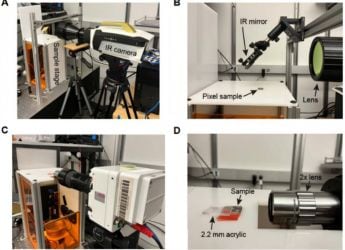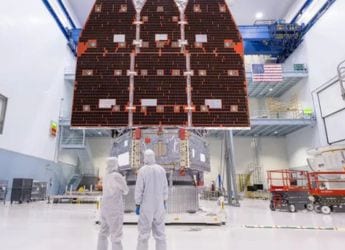- Home
- Science
- Science News
- Scientists Develop Transparent Solar Panels That Can Be Used as Windows
Scientists Develop Transparent Solar Panels That Can Be Used as Windows
Unlike opaque silicon solar panels, transparent solar panels are made out of an organic plastic.

Photo Credit: University of Michigan / Silvia Cardarelli
Researchers have managed to develop solar cells with record efficiency of 10 percent
A group of researchers has managed to develop a new way of making photovoltaic solar panels that still allow light to pass through. These transparent solar cells can start a new energy revolution as they can be fitted in offices, homes, factories and more buildings. By just replacing windows, transparent solar cells can take up minimal space while still producing clean and green energy. The researchers have managed to develop organic solar cells with a new method that can easily be scalable for mass production.
"In principle, we can now scale semitransparent organic solar cells to two meters by two meters, which brings our windows much closer to reality," said Stephen Forrest, Professor of Electrical Engineering and the author of the study published in the journal Joule.
The vast majority of solar cells being used today are made up of silicon, which results in the panel being completely opaque. While recent development and research into silicon photovoltaic cells have seen a ramp up, alternative solar cell technologies like organic solar cells are slowly being explored as well even as they lag behind silicon panels in efficiency and lifespan. Forrest's group of researchers have managed to develop solar cells with record efficiency of 10 percent and a 30-year lifespan.
The most significant hurdle against the widespread adoption of organic solar cells has been the fact that up till now, it was impossible to scale manufacturing for it. The lasers used to etch the micron-scale electrical connections in silicon scales could not be used on organic cells, as they would easily damage the plastic light absorbers.
Forrest's team instead developed a multistep peel-off patterning method that could still make micron-scale connections. Thin pieces of patterned plastic were set down between the organic and metal layers, which were then peeled off to create extremely fine electrical interconnections between the cells.
The panels have about 50 percent transparency and a greenish tint, making them suitable for commercial use. Technologies that can make the solar cells even more transparent, for use in residence, can also be made using the newly developed technique.
"The research we are doing is derisking the technology so that manufacturers can make the investments needed to enter large-scale production," Forrest said.
Get your daily dose of tech news, reviews, and insights, in under 80 characters on Gadgets 360 Turbo. Connect with fellow tech lovers on our Forum. Follow us on X, Facebook, WhatsApp, Threads and Google News for instant updates. Catch all the action on our YouTube channel.
Related Stories
- Samsung Galaxy Unpacked 2025
- ChatGPT
- Redmi Note 14 Pro+
- iPhone 16
- Apple Vision Pro
- Oneplus 12
- OnePlus Nord CE 3 Lite 5G
- iPhone 13
- Xiaomi 14 Pro
- Oppo Find N3
- Tecno Spark Go (2023)
- Realme V30
- Best Phones Under 25000
- Samsung Galaxy S24 Series
- Cryptocurrency
- iQoo 12
- Samsung Galaxy S24 Ultra
- Giottus
- Samsung Galaxy Z Flip 5
- Apple 'Scary Fast'
- Housefull 5
- GoPro Hero 12 Black Review
- Invincible Season 2
- JioGlass
- HD Ready TV
- Laptop Under 50000
- Smartwatch Under 10000
- Latest Mobile Phones
- Compare Phones
- Jolla Phone
- Realme P4x 5G
- OnePlus Ace 6T
- Nubia Flip 3
- Nubia Fold
- OPPO A6x 5G
- Samsung Galaxy Z TriFold
- Poco F8 Ultra
- Asus ProArt P16
- MacBook Pro 14-inch (M5, 2025)
- OnePlus Pad Go 2
- Poco Pad M1
- Just Corseca Skywatch Pro
- Honor Watch X5
- Acerpure Nitro Z Series 100-inch QLED TV
- Samsung 43 Inch LED Ultra HD (4K) Smart TV (UA43UE81AFULXL)
- Asus ROG Ally
- Nintendo Switch Lite
- Haier 1.6 Ton 5 Star Inverter Split AC (HSU19G-MZAID5BN-INV)
- Haier 1.6 Ton 5 Star Inverter Split AC (HSU19G-MZAIM5BN-INV)

















